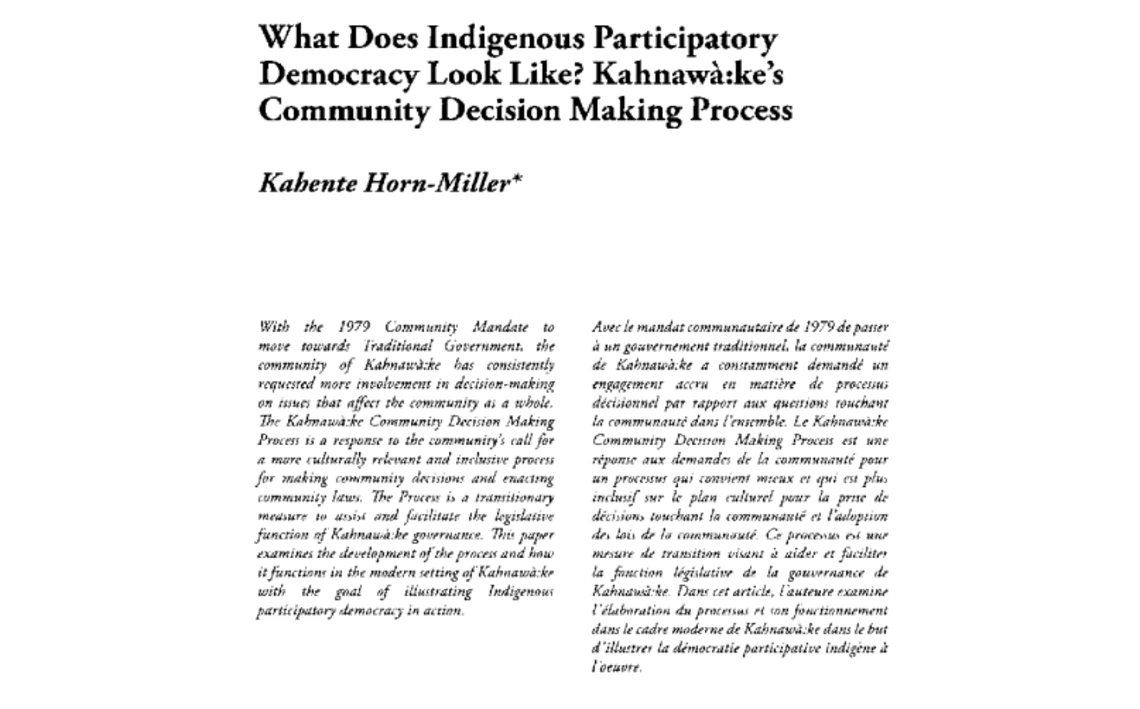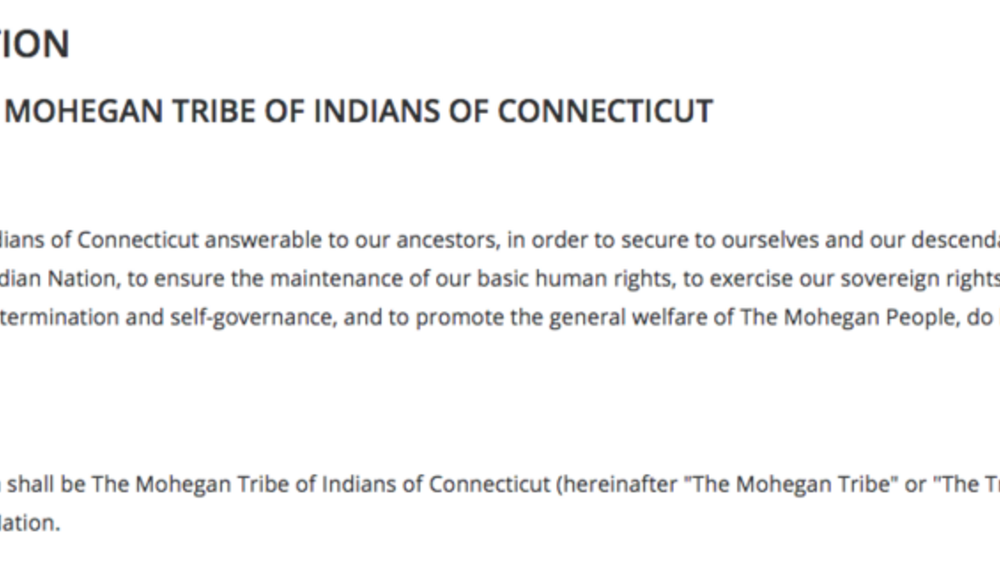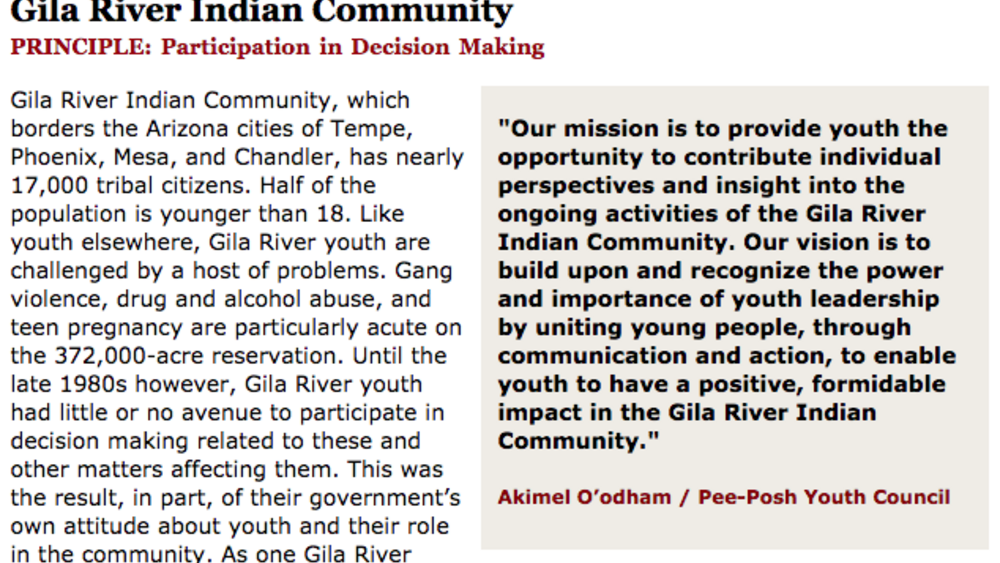With the 1979 Community Mandate to move towards Traditional Government, the community of Kahnawà:ke has consistently requested more involvement in decision-making on issues that affect the community as a whole. The Kahnawà:ke Community Decision Making Process is a response to the community's call for a more culturally relevant and inclusive process for making community decisions and enacting community laws. The Process is a transitionary measure to assist and facilitate the legislative function of Kahnawà:ke governance. This paper examines the development of the process and how it functions in the modern setting of Kahnawà:ke with the goal of illustrating Indigenous participatory democracy in action.
Additional Information
Horn-Miller, Kahente. "What Does Indigenous Participatory Democracy Look Like? Kahnawà:Ke's Community Decision Making Process." Review of Constitutional Studies. Vol. 18, No. 1. 2013. Paper. (https://papers.ssrn.com/sol3/papers2.cfm?abstract_id=2437675, accessed June 4, 2024)




